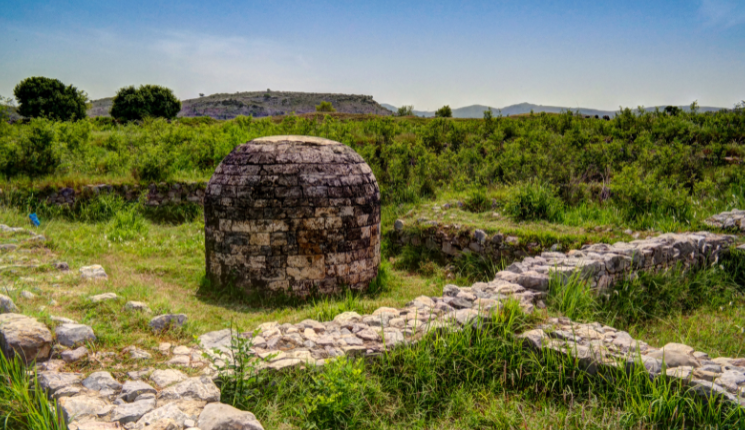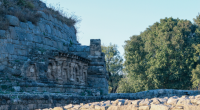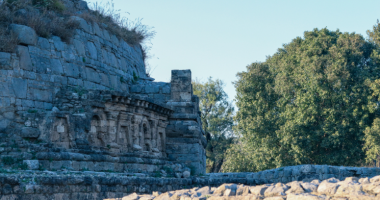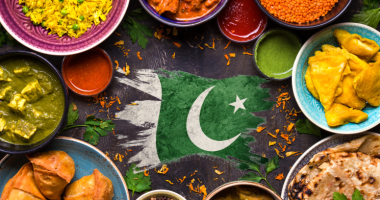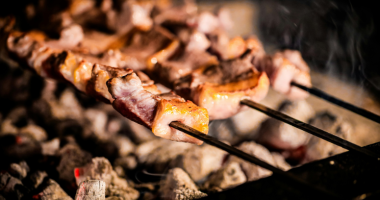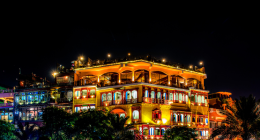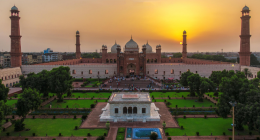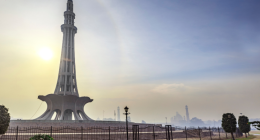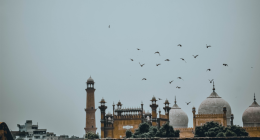Taxila ancient ruins hold stories carved in stone, echoing with chants of monks, footsteps of Greek soldiers, and the prayers of ancient Hindus. Nestled near Islamabad, this archaeological treasure trove blends art, religion, and history in one breathtaking journey.
From peaceful monasteries to Indo-Greek cities, Taxila gives you more than crumbling rocks—it offers a glimpse into the soul of South Asia’s past. So if you’re curious, pack your curiosity and step into this historic maze of time.
1. Dharmarajika Stupa – Iconic Taxila Ancient Ruins
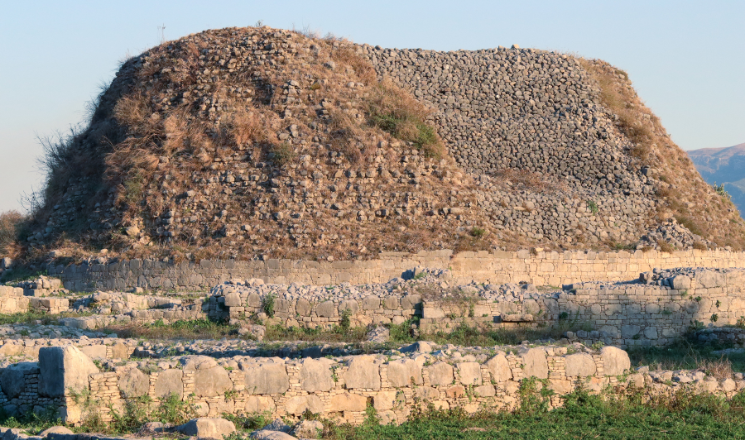
One of the oldest and most sacred Taxila ancient ruins, Dharmarajika Stupa was built by the great Mauryan emperor Ashoka in the 3rd century BCE. It once held relics of Buddha himself.
Today, the round stupa is surrounded by smaller shrines, each telling stories of devotion. Moreover, its spiritual ambiance still draws visitors seeking peace and history alike. In addition, broken sculptures and relics add depth to your understanding of ancient Buddhist art. Despite centuries of damage, nevertheless, the serenity of the site remains powerful and moving.
2. Sirkap – Indo-Greek Urban Heritage
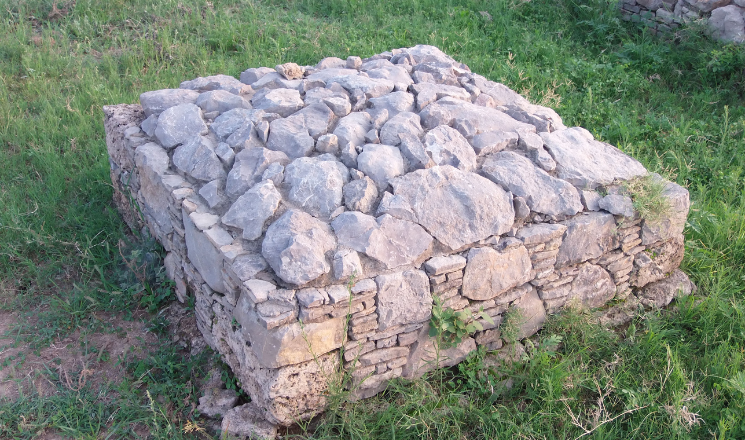
TThis site showcases how Greek planning met South Asian spirituality. Sirkap, built by Indo-Greeks, is laid out in a perfect grid—evidence of strong urban design.
Here, you’ll discover Buddhist stupas, Jain temples, and Hindu shrines—all coexisting within the same ancient city. Not only that, but the symmetry and geometry reflect a blend of two rich civilizations. Its most iconic spot? The Double-Headed Eagle Stupa, an artistic masterpiece that still amazes onlookers. As a result, visitors often rank it among the most fascinating ancient cities in Pakistan.
3. Julian Monastery – Buddhist Hilltop Sanctuary
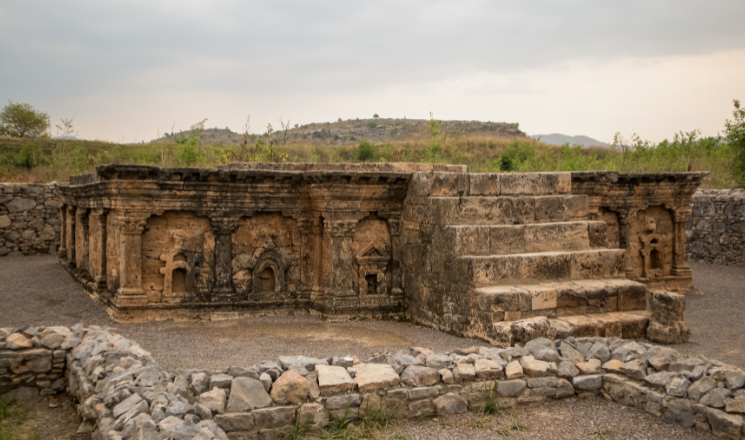
Perched on a hill, Julian Monastery (or Jaulian) offers both stunning views and spiritual calm. This peaceful site once trained monks and scholars in Buddhist teachings.
You’ll find meditation chambers, stone prayer halls, and expressive Buddha sculptures. Even after centuries, some carvings retain their delicate features.
The Pocket Earth app gives you offline maps and trail guides to reach this serene site.
4. Mohra Moradu – Artistic Details in Historic Ruins of Taxila
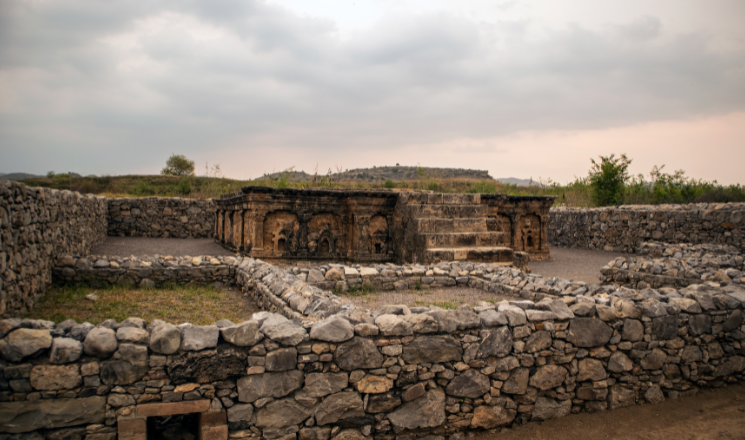
Though smaller in scale, Mohra Moradu surprises many with its detailed stucco artwork. It’s one of those archaeological sites in Taxila where devotion meets aesthetics.
The central stupa is framed by intricately decorated votive shrines. For example, you’ll spot peaceful Buddha images with gentle expressions carved into niches. These designs, more importantly, showcase emotional grace rarely seen elsewhere. Additionally, the layout makes it easy to explore without feeling overwhelmed.
5. Bhir Mound – Taxila’s First City
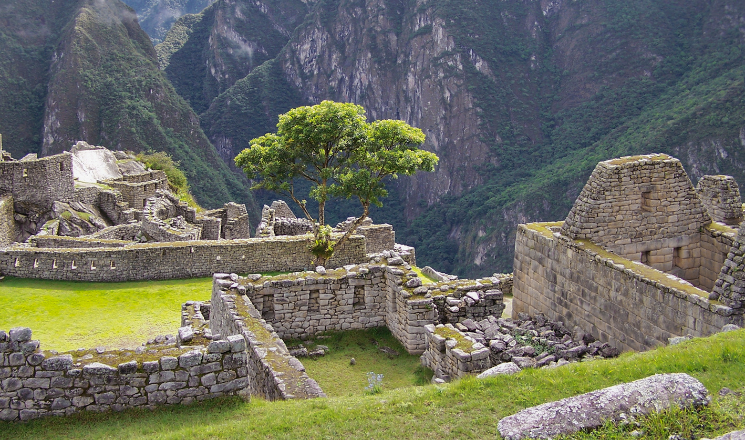
Dating back to the 6th century BCE, Bhir Mound represents the original city of Taxila. The ruins may seem modest at first glance, however, their historical value runs deep.
Unearthed coins, pottery, and straight streets tell tales of early urban life. In fact, you’ll notice both Persian and Indian influences throughout the site. As you walk, try imagining traders and scholars moving through these same spaces. Consequently, Bhir Mound plays a vital role in understanding Taxila’s layered past.
6. Taxila Museum – Cultural Gateway to the Ruins
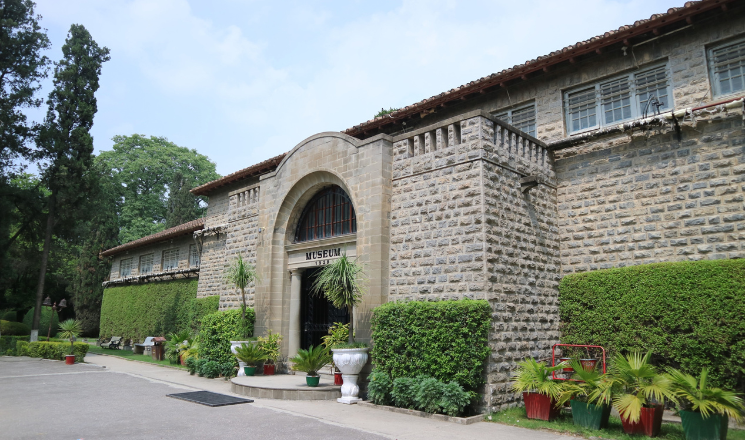
Before—or after—you visit the ruins, don’t skip the Taxila Museum. It connects all these ancient sites with maps, artifacts, and background stories.
Inside, you’ll find stone sculptures from the Gandhara era, jewelry, ancient tools, and most famously, the Fasting Buddha, carved with emotional precision. It’s the perfect stop for context and reflection.
7. Jandial Temple – Indo-Greek Temple Wonder
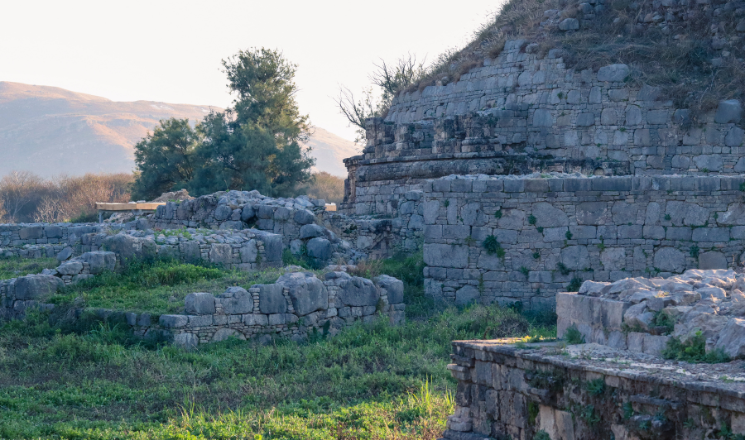
You’d be forgiven for thinking Jandial Temple came straight from Athens. With its limestone columns and symmetrical layout, it’s one of the few truly Greek-style temples in the region.
Scholars believe it may have been used for Zoroastrian worship or adapted later. Either way, it adds diversity to the styles of Taxila’s ancient ruins.
8. Pipplan – Forgotten Monastery in the Wild
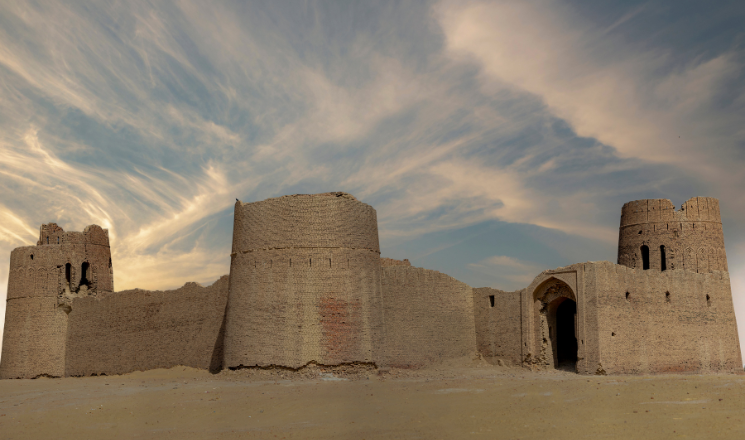
If you’re the type who loves exploring hidden, overgrown ruins, Pipplan is your spot. It once served as a Buddhist monastery, though today nature has claimed much of it back.
You’ll see stone foundations and hints of assembly halls peeking through bushes. The quiet here feels untouched—like stepping into an untouched past.
9. Badalpur – Recently Excavated Buddhist Site
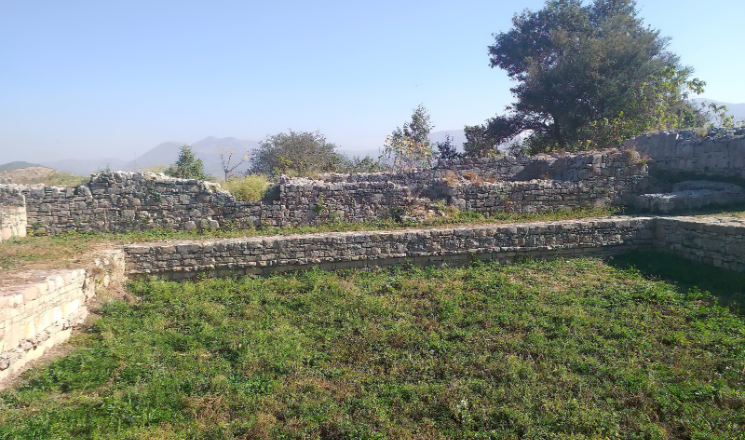
Unlike other older discoveries, Badalpur has been excavated more recently. That gives it a fresher appearance and cleaner structure visibility.
Rooms, kitchens, and religious halls paint a picture of everyday life in a Buddhist complex. Moreover, these buildings remain relatively well-preserved compared to other sites. As a result, visitors can easily imagine monks walking between rooms, teaching, or meditating. Additionally, the site’s ongoing discoveries make it an exciting stop for archaeology lovers. Even so, it still feels peaceful and grounded in the past.
10. Giri Fort – Military Lookout Among Spiritual Sites
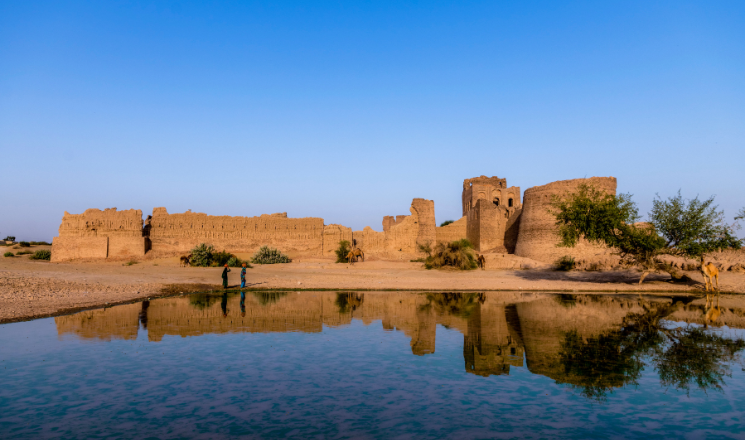
Breaking the religious trend, Giri Fort adds a defensive layer to Taxila’s landscape. Sitting atop a steep hill, this ancient Hindu fort once guarded the area against northern invaders.
Stone towers and thick walls now lie in partial ruins, but the elevated views are unbeatable. In fact, hikers often find this stop both scenic and historically rich. Furthermore, the contrast between Giri and surrounding spiritual sites highlights Taxila’s diverse history. Therefore, if you’re eager to understand the area’s full strategic importance, this site is essential.
Final Thoughts on Taxila Ancient Ruins
Each ruin in Taxila offers a unique portal into the past. While some resonate with quiet spirituality, others echo with footsteps of soldiers or whispers of philosophers.
Through Buddhist stupas, Greek city grids, and Hindu temples, Taxila ancient ruins weave a story of coexistence and cultural fusion. With every stone, they teach us that progress and preservation can walk hand in hand.
So if you’re ready to see history rise from the earth, plan your route, load up your travel apps, and uncover the wonder that still lives in these timeless ruins.

